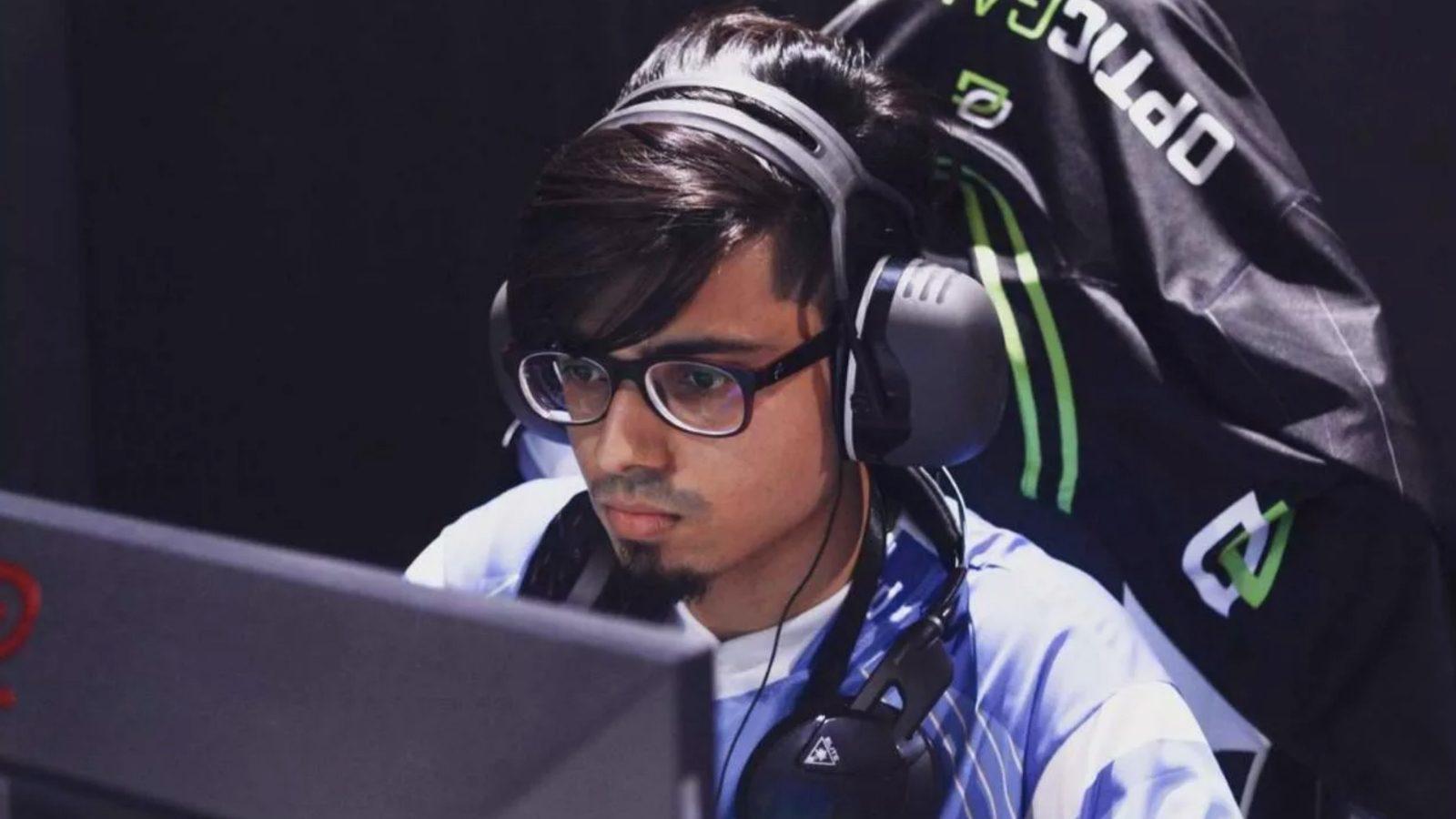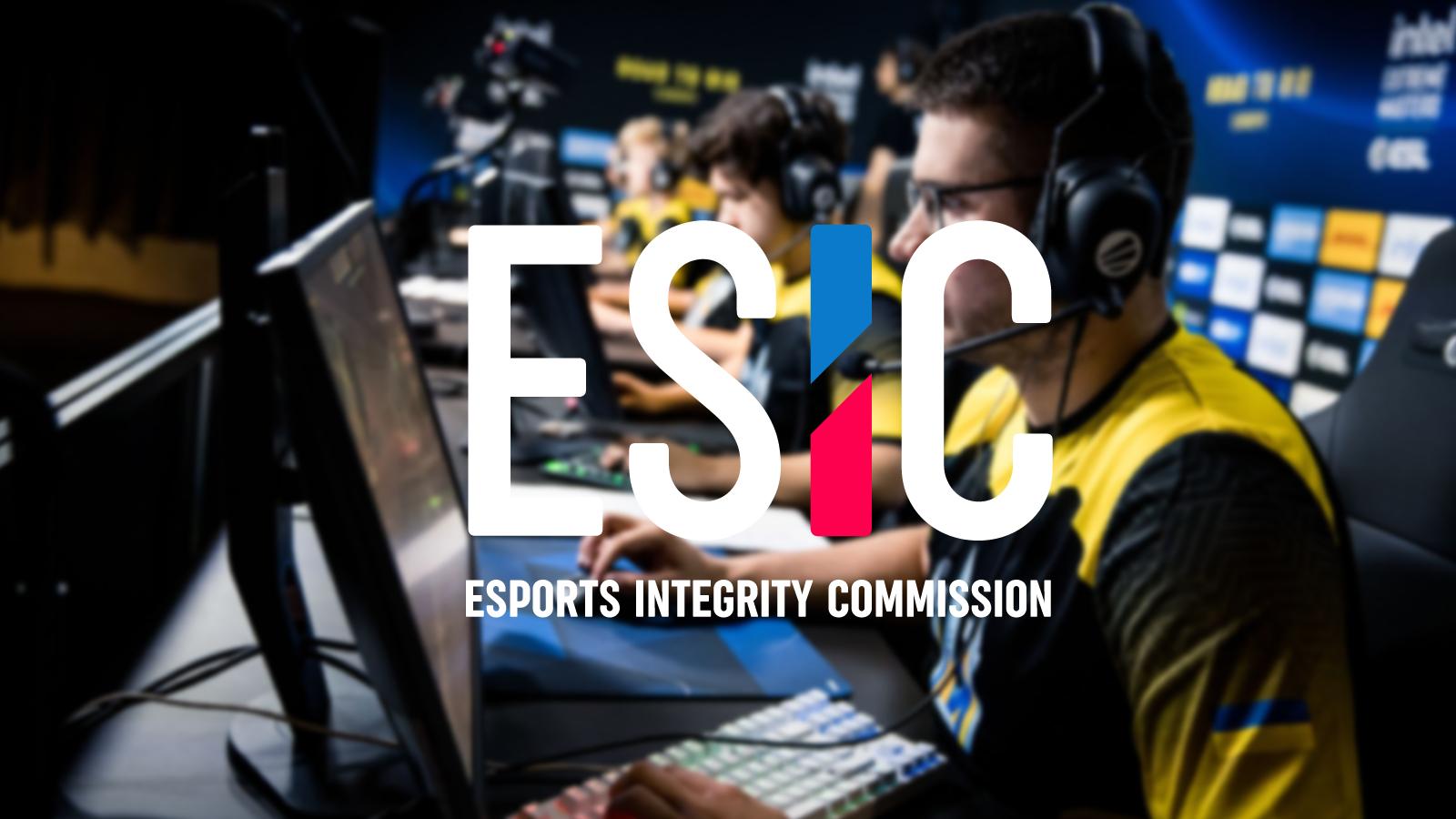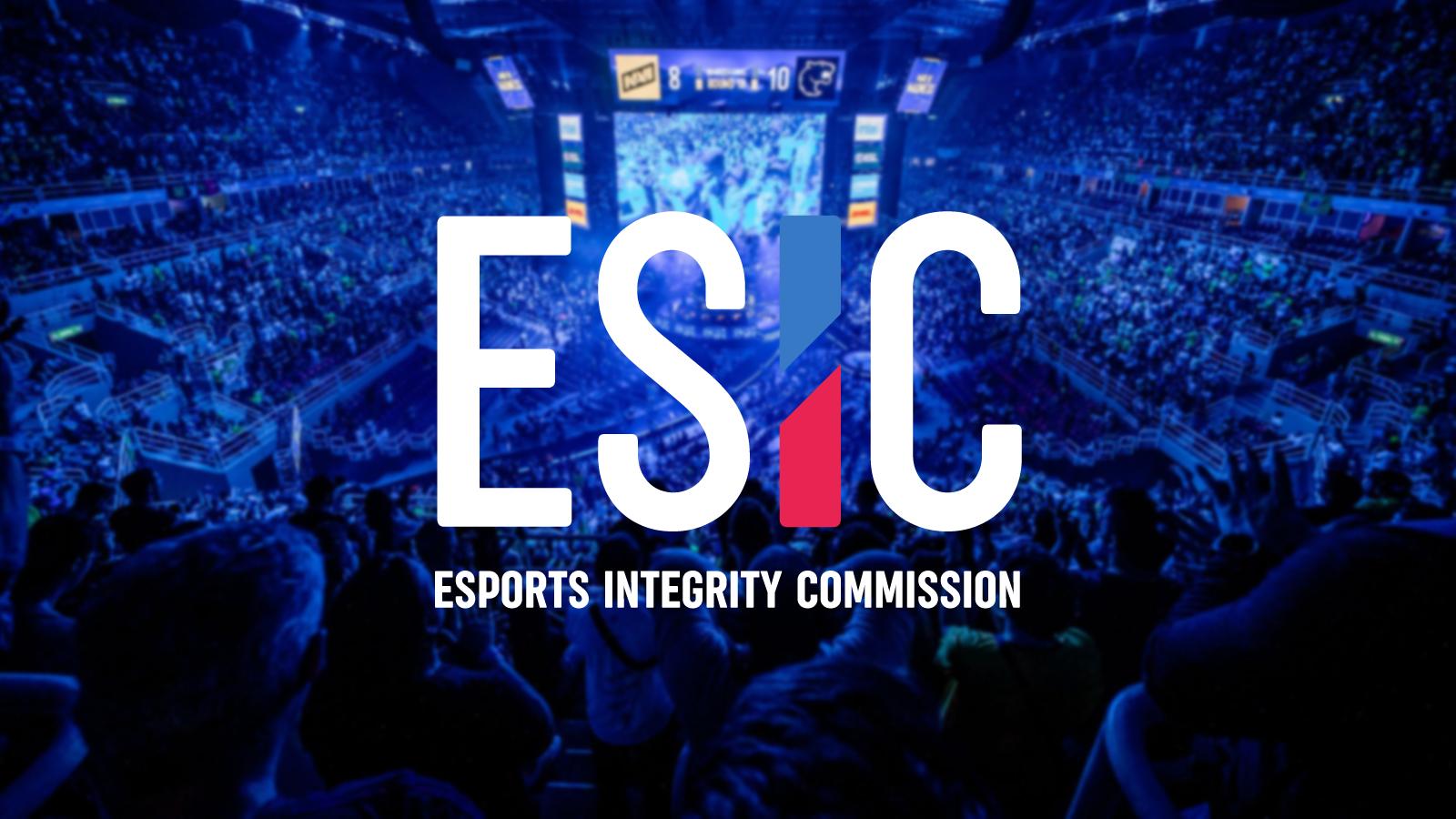CSGO coaches break silence on ESIC bug investigation: ‘Like being in the world’s worst jail’
 TwoGNation/StarLadder
TwoGNation/StarLadderSeveral coaches spoke with Dexerto about their experiences dealing with ESIC, criticizing the organization’s methods and raising questions about the investigation into the use of the coach bug.
“Thank God for my ex-girlfriend. Had I been alone at that time, I probably would have committed suicide,” CS:GO coach Anton ‘ToH1o’ Georgiev tells Dexerto. “That’s how bad I felt.”
ToH1o’s descent into darkness began on the morning of September 28, 2020. He was woken up in a hurry and told to check the latest announcement from the Esports Integrity Commission (ESIC), a not-for-profit members’ association established in 2015 to help protect the integrity of esports competitions around the world.
The announcement included a list containing the names of 37 CS:GO coaches who had been banned by the esports watchdog for periods ranging from under four months to three years for the use of the spectator bug for competitive advantage.
His name was on the list.
ToH1o couldn’t believe his eyes. Like the CS:GO scene in general, he knew that the release of the list was forthcoming, but he had never suspected that he was being investigated. He had no recollection of encountering the bug and had never been contacted by ESIC regarding this matter.
The night before, he had gone out to a shisha bar with Nikolay ‘pNshr’ Paunin, a fellow Bulgarian CS:GO coach. By then, pNshr had been in talks with ESIC for some time regarding a single instance of spectator bug use involving him. When they met that night, pNshr knew that he was getting suspended for 3.75 months, his confession having resulted in a 25% reduction to his initial six-month ban.
“I told him, as a joke, ‘Imagine if I’m on the list’”, ToH1o says. “He was like, ‘No, that’s not even possible’”.
ToH1o sat on his bed for a while, gathering his thoughts. He asked pNshr for an email address to contact ESIC and tried to open a dialogue.
And then he waited.
Appealing against the ban
ToH1o was banned for 10 months for two instances of bug use, both dating back to late 2017. He was found to have come across the bug in one round of ex-Outlaws’ IEM Oakland open qualifier win against hASSeLsNOk in September 2017, and in all 30 rounds of Windigo’s Inferno victory against Tricked in CS:GO.NET Cup 1, three months later.
ToH1o submitted his notice of appeal on November 30, 2020, but it wasn’t until May 7 that he was finally heard by a three-person independent appeal panel chaired by Alfonso León Lleó, a Spanish lawyer specialized in sports law.
 TwoGNation
TwoGNationAfter spending months collecting evidence and preparing his case, ToH1o felt as ready as anyone could be. His plan was to explain to the panel that when he experienced the bug for the first time, he didn’t know what it was and it had no impact on the outcome of the round. As for the second occurrence, it happened during a bootcamp in Serbia while he was standing behind his players and not sitting in front of his computer.
When he finally appeared by video conference in front of the panel, he spoke for over two hours without any interruptions, showing all sorts of images and videos to support his case, including surveillance footage from the bootcamp room, car rental receipts, and proof of hotel booking. He also provided written statements from two ex-Outlaws players confirming that he did not provide any information about the position of the opposing team.
It was, by his account, a slam dunk.
“I showed them everything, down to the smallest detail,” ToH1o says. “They were like, ‘We have nothing to say. We don’t have any questions.’”
According to him, the panel turned to ESIC Integrity Commissioner Ian Smith, who was also present in the hearing. Asked why ToH1o had been banned, Smith allegedly pointed to ESIC’s sanction matrix, the system created to deal with the high number of cases of coaches who had encountered the spectator bug by attributing demerits points to coaches based on frequency and duration of bug use.
What did I said ???!?!?! Yes it took me 7 months but hey!!! I DO WHAT I PROMISED!!!! 👊👊👊👊🔥🔥🔥🔥🔥🔥 https://t.co/ZIPzG9t8MZ
— Anton Georgiev (@ToH1o) June 15, 2021
But the explanation did not wash with ToH1o, who alludes to a difference in treatment that coaches received based on their status in the CS:GO scene. He mentions the case of Sergey ‘lmbt’ Bezhanov, who has a much higher profile in the CS:GO scene than him. lmbt, the only other coach among the 37 to have had a ban rescinded by ESIC, did not have to go to the same lengths as ToH1o to prove his innocence: His ban was lifted within three weeks without an independent appeal panel being set up, his evidence deemed conclusive by Smith.
“I told Ian, ‘If you had contacted me before you punished me, this would have been a very easy process,’” ToH1o says. “He was sad that he had not contacted me. I could tell that from the look on his face.”
ToH1o’s case is not unique, though. Another coach, who spoke to Dexerto on the condition of anonymity, also complained about being ignored by the esports watchdog. He said that he only received a response to one of the three emails he sent to ESIC about his 2020 ban. He is still waiting for a reply to his last email, sent in October 2020.
“From day one I have never had any support [from ESIC],” the coach told Dexerto. “I’m going to send them another email, but I think they won’t give a shit. They have never given a shit.”
Like ToH1o, this coach, who is working for a top-30 team, learned about his ban from ESIC’s announcement. He had come across the static variant on numerous occasions, reporting it to the tournament organizer each time. “I thought there was a problem with the server,” he said. “I didn’t know there was a problem with the game.”
lmbt speaks out
After almost two years, lmbt is finally ready to break the silence about his story.
A key reason for that is the ongoing war in his homeland of Ukraine, which has relieved him of any fears. “Will I be alive tomorrow or in a week?” lmbt says in a surprisingly light-hearted manner.
He kept it to himself all this time because he didn’t wish to disrupt ESIC’s investigation into the use of the coach bug or damage the credibility of an organization that was attempting to clean up the scene.
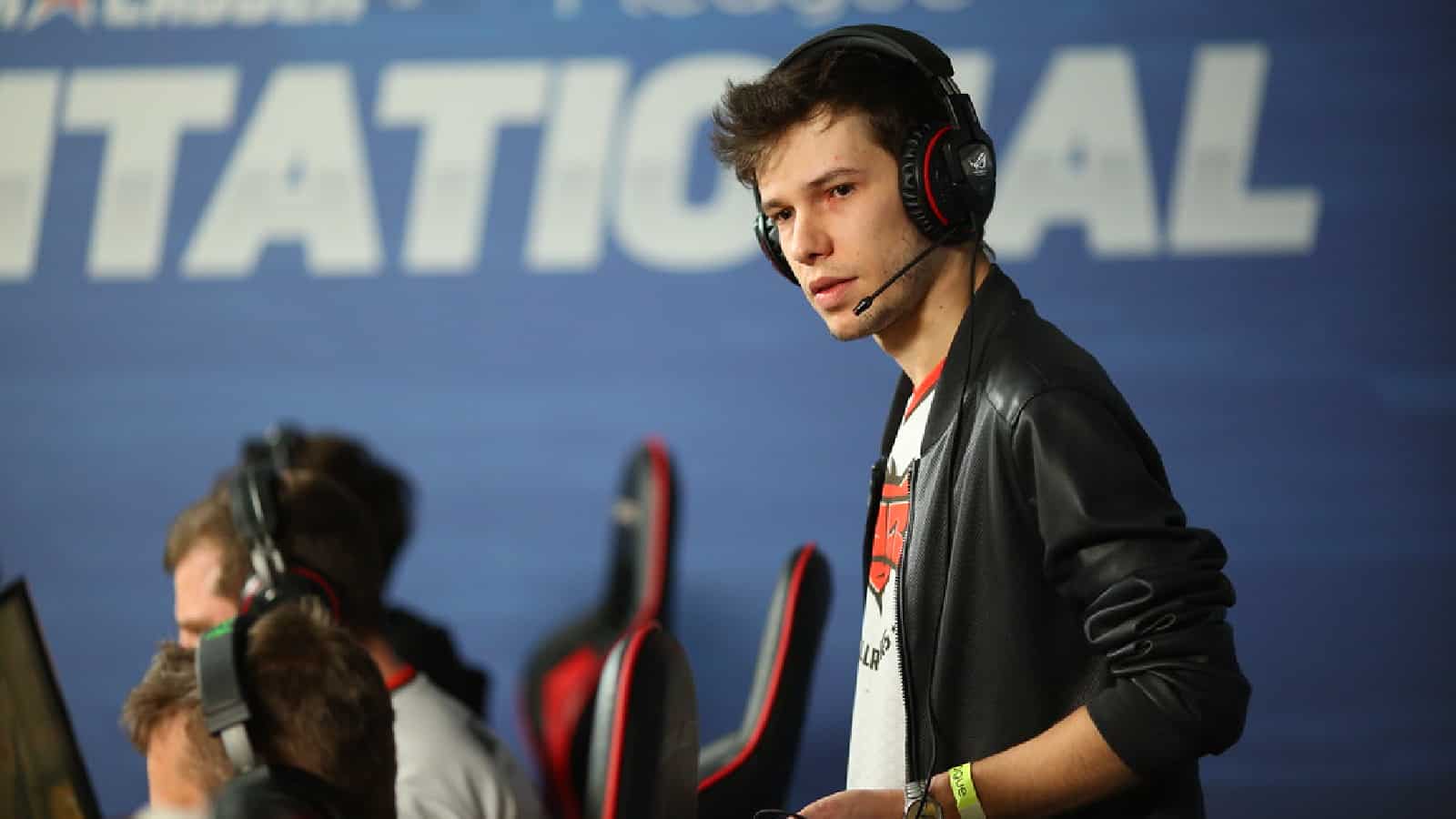 StarLadder
StarLadderBut as he watched ESIC hand out provisional suspensions to three coaches (Luis ‘peacemaker’ Tadeu, Rafael ‘zakk’ Fernandes and Sergey ‘hally’ Shavaev) just days before PGL Major Antwerp, he couldn’t sit idle any longer.
The announcement brought back memories of his own case, which ended on October 15, 2020, when ESIC cleared him of any wrongdoing in four cases of bug use. Despite the favorable ruling, the Ukrainian coach is still aggrieved about the way he was treated by the esports watchdog.
When the bug became the talk of the CS:GO community in August 2020, lmbt recalled coming across it. Together with the manager of forZe, the organization he was working for at the time, he found out that he had first encountered the bug five years earlier while coaching HellRaisers in a FACEIT League closed qualifier match against NAVI. The other three cases were from August 2020 with forZe’s team, one from a FunSpark ULTI qualifying match against Nordavind and two from an Eden Arena Malta Vibes Cup 9 series against MIBR.
Acting on his own initiative, lmbt emailed ESIC on September 5 about his cases and provided evidence supporting his claims that he had not abused the bug. Five days later, ESIC responded saying that they would look into the matter. “I will ask our investigators to confirm and you will hear from me if there is an issue,” Smith, ESIC’s Integrity Commissioner, said in an email. “But otherwise, you can relax (I hope).”
However, he didn’t hear from ESIC again until the night of September 27, when he was told about his imminent ban and given 12 hours’ notice to prepare a statement.
“The investigation only started after I got banned,” he says. “They wrote to me saying that it was because they didn’t have enough resources. Like, what the f***? If you don’t have enough resources, then do it properly, step by step. You have to investigate first and only then can you punish people and make it public.”
On October 15, less than three weeks after releasing the list of the 37 banned coaches, ESIC announced that lmbt’s sanction had been lifted “due to the compelling nature of the evidence” provided. According to Ian Smith, ESIC’s Integrity Commissioner, the Ukrainian coach proved that was not at his computer in the MIBR series and that, in the games against NAVI and Nordavind, he “did disconnect timeously and seek admin assistance, neither seeking or gaining any unfair advantage through exploitation of the bug.”
Today we got an email from ESIC regarding the case with @LMBT_CSGO saying that "the original findings and sanction are hereby rescinded and he is free to coach in ESIC member events."
We're glad that justice has been served and Sergei is now able to work with our squad as usual😊 pic.twitter.com/YHZz2MYQD4— forZe Esports (@forzegg) October 15, 2020
At the time, Smith told HLTV.org that ESIC was looking at evidence from other coaches who had been banned. But besides ToH1o and lmbt, Faruk ‘pita’ Pita is the only coach of the 37 who has successfully appealed against a ban. In January 2021, the former NIP coach saw his initial 10-month ban reduced by 45 percent after an appeal hearing.
lmbt believes that the reason why ESIC analyzed his case so quickly, without the need for a hearing, was that it was being threatened with legal action.
“Together with forZe’s owners, we decided from day one that we would not let it go,” he says. “The reputational damages to me and the club were huge.”
But ESIC’s methods aren’t the only thing that lmbt has a hard time accepting. He also takes issue with the timing of the bans that the esports watchdog hands out. He recalls that the first wave of bans came right before a round of Major qualifiers. He had to miss three group matches of IEM New York CIS because of it.
The provisional suspension of three coaches before PGL Major Antwerp left Imperial, 9z and Team Spirit without the chance to find a replacement: By the time ESIC made the announcement, the registration deadline for coaches had already passed.
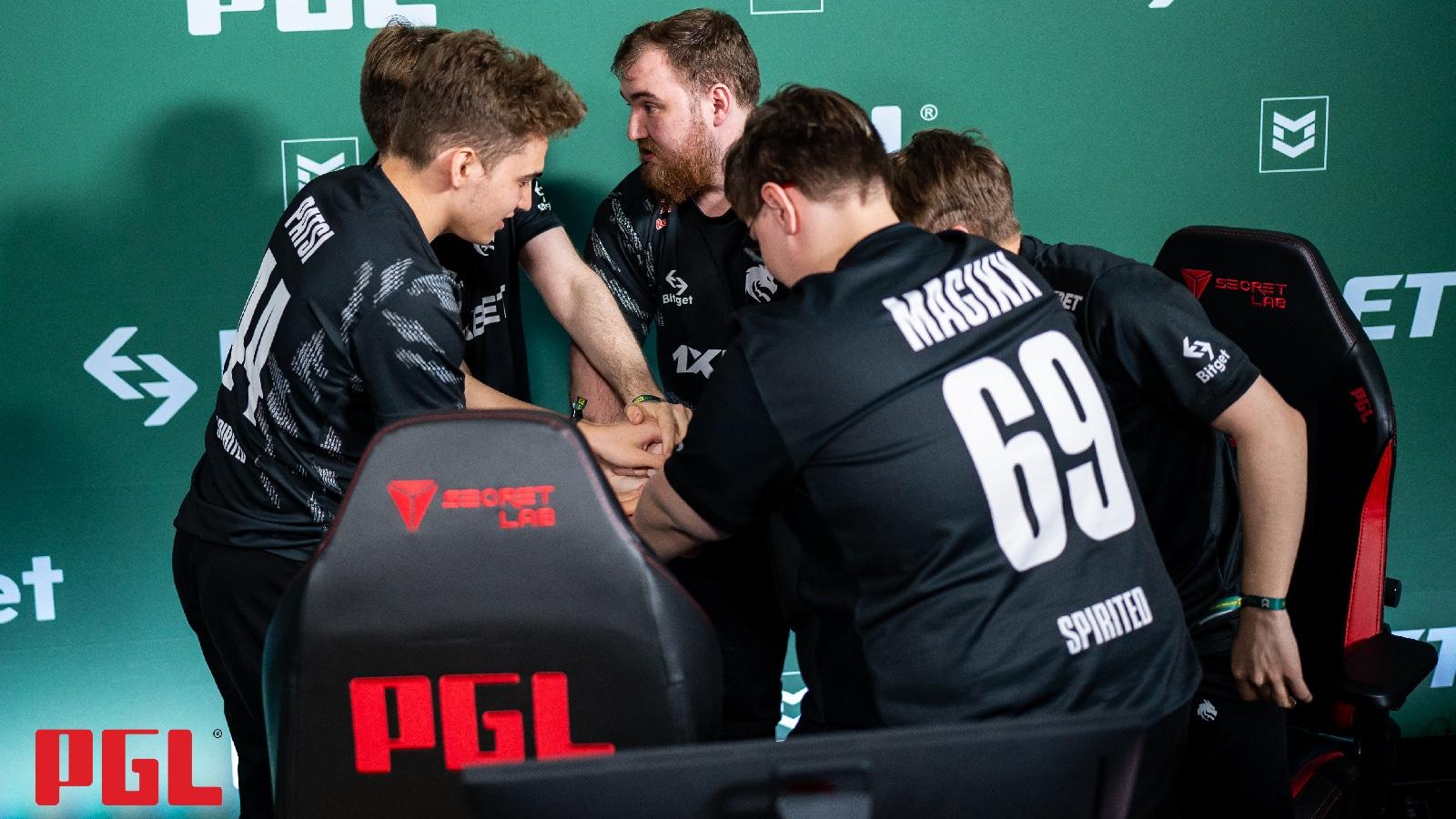 Luc Bouchon/PGL
Luc Bouchon/PGLTeam Spirit ended up being the surprise package in Antwerp, reaching the semi-finals; who’s to say they would not have gone farther with a coach guiding them in the tournament?
“You cannot come out with this evidence three days before the event,” lmbt argues. “Even if all those coaches were banned forever, the organizations could be ready and change coaches, and teams could work normally.
“It’s not normal to make this kind of announcement right before the biggest tournament of the season, especially if you have had this evidence for some time.”
When a paradigm shifts
lmbt’s story bears some similarities to the recent case involving peacemaker. The Brazilian coach faced a ban of up to 24 months after encountering the free roam bug — the most serious of the three variants of the bug — yet he was only suspended for 22 days (time served under his provisional suspension) for failing to take appropriate action during the game in question or report the bug to a tournament admin.
peacemaker, who hired a lawyer to respond to the charge, provided evidence that Smith, the ESIC Commissioner, deemed to be “compelling” — including expert testimony and character evidence.
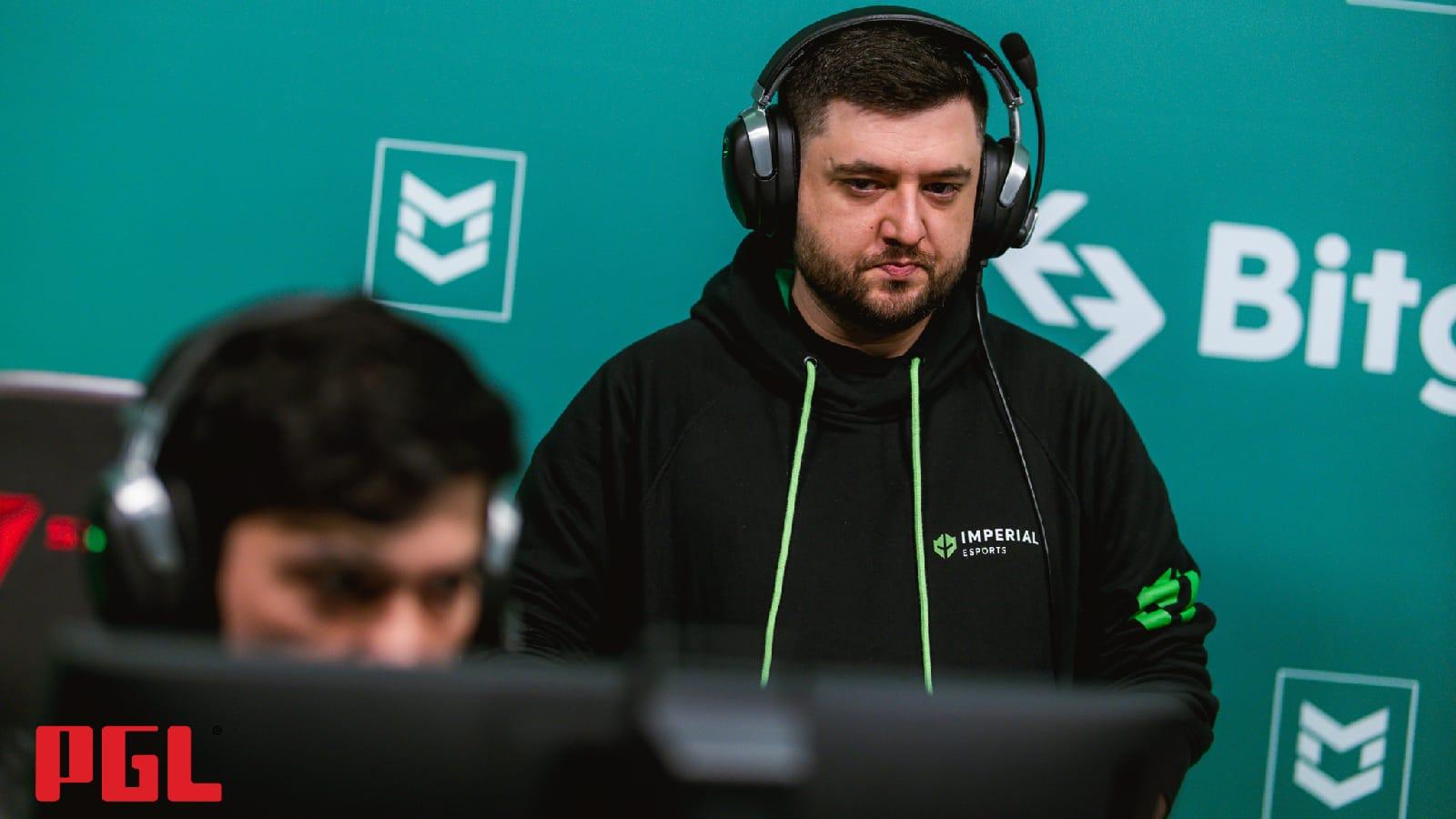 João Ferreira/PGL
João Ferreira/PGLIn a statement, ESIC said that it treats the free roam bug (and only this variant) as a potential cheating offense. Because of this, it explained, establishing that an unfair advantage is achieved is “a necessary precondition for the charge being established”. It’s a rather puzzling explanation, considering that in the other two, less serious variants of the bug, the mere potential for exploitation resulted in a ban, whether an unfair advantage was achieved or not. This is how OG coach Casper ‘ruggah’ Due was notoriously banned for 3.75 months for encountering the static bug in only one round of a 2016 game against Virtus.pro. Or how FaZe coach Robert ‘RobbaN’ Dahlström was banned for 5.5 months for encountering the same bug in a game his team lost 16-1 and had to miss two Majors, including the one his team won in Antwerp.
Despite the mental gymnastics performed by ESIC to justify its controversial ruling, peacemaker’s case has created the perception that ESIC will walk back on sanctions at the mere threat of a legal battle. “You’ve just told the world you actually don’t have any authority,” Dexerto Editor-at-Large Richard Lewis said on the Revenge of By the Numbers show.
Dexerto knows that other coaches — buoyed up by the outcome of peacemaker’s appeal — have sought legal help, which is likely to further delay an investigation that has dragged on for nearly two years.
One of those coaches is Allan ‘Rejin’ Petersen, who was part of the first wave of 37 bans in September 2020. His initial three-year ban was slashed to 19.8 months after he helped veteran tournament admin Michal Slowinski with the investigation. After almost two years out, he returned to activity on May 25, joining British organization Endpoint as its new CS:GO head coach.
The evidence provided by peacemaker included testimony from Danny ‘mahone’ Hsieh, a content creator and analyst who has worked for NIP and BLAST. In a video posted on his YouTube channel, mahone analyzed the one round in which peacemaker had the free roam bug. “There is no clear evidence”, mahone concluded, that suggests the Brazilian coach shared information with his Heroic players.
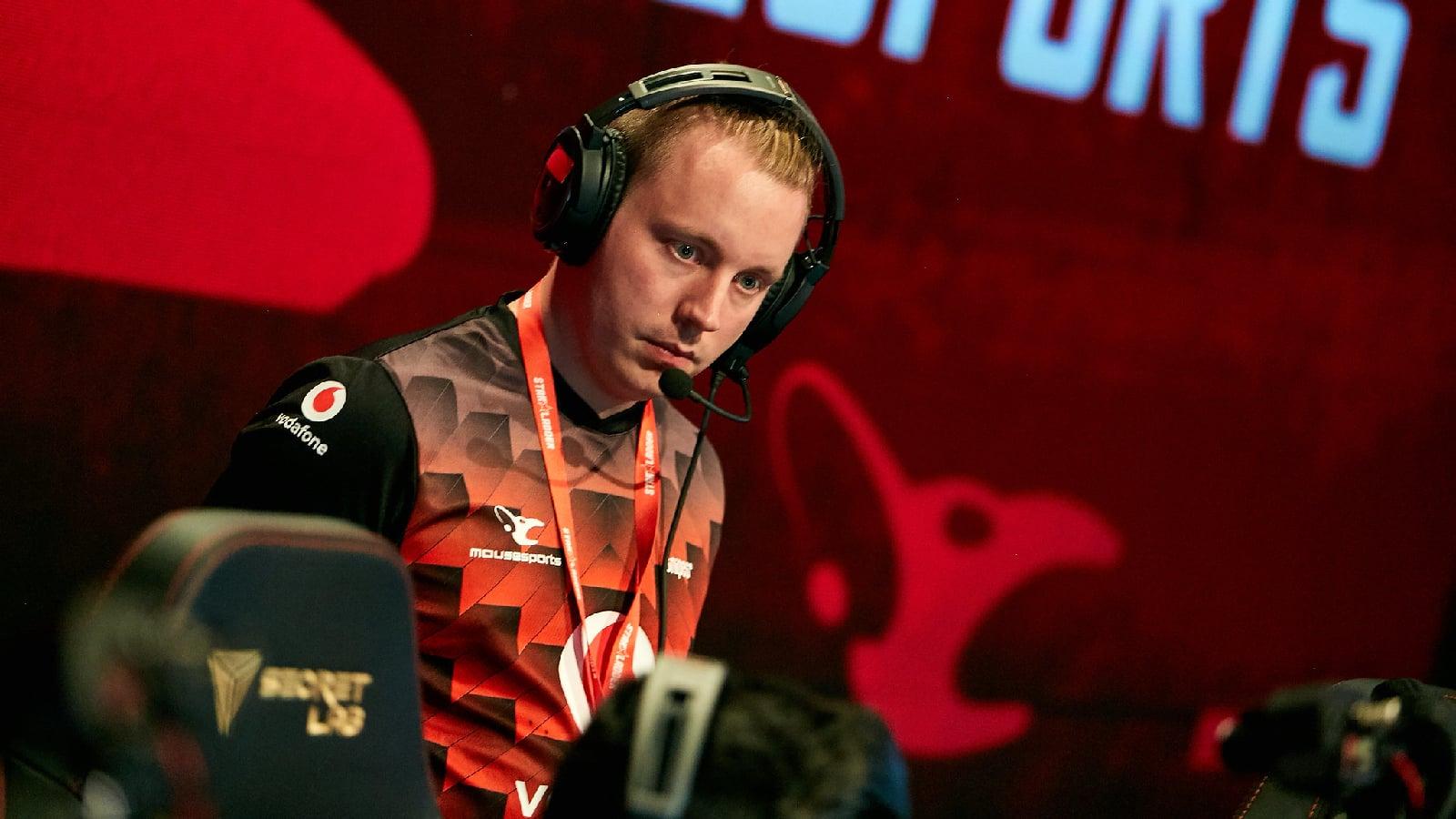 StarLadder
StarLadderRejin says he can mount a similar defense for each of the 116 rounds for which he was banned. “I did not relay any information to the team, I was just an idiot to not get out of it [the bug],” he says, adding that the outcome of peacemaker’s case has changed the rules of the investigation halfway through. “We all agreed that if you were in this [the bug], you’d get punished. That was the agreement from the start. It didn’t matter if you relayed information or not. Now, you are allowed to defend yourself.”
Rejin maintains that he was rightfully banned for what he did, but he argues that he was not given the chance to defend himself. He also says that ESIC did not follow due process, claiming that he was never provided with his notice of charge.
Despite receiving assurances from his lawyers that he has a strong case, Rejin still doesn’t know whether he will pursue legal action. “I don’t want to harm anyone,” he says, admitting that he should have reported the problem to admins or left the server when he found himself in a bugged state. “I f***ed up, I need to live with the consequences.” All that he wants, he adds, is to have the chance to coach at CS:GO Majors again.
In January 2021, Valve announced the extent of the punishments handed down to coaches who had used the bug during the initial wave. Using ESIC’s sanctioning system, Valve determined that bans ranged from a minimum of one CS:GO Major all the way up to a permanent ban from its events, depending on the frequency of the abuse.
Today, Valve (@CSGO) ratified ESICs sanctions against coaches who exploited the Spectator Bug.
Below is the table from Valve translating demerits issued by ESIC to majors missed by offending parties.
Read the full release from Valve: https://t.co/zr9IPgLWOp pic.twitter.com/d0RrRXqD4w
— ESIC (@ESIC_Official) January 28, 2021
The news helped legitimize ESIC’s work at a time when the organization was also dealing with investigations related to a match-fixing scandal in ESEA MDL North America, betting-related offenses in Australia, and stream-sniping at the highest level in the scene. Many welcomed Valve’s involvement in such a hot topic, though critics pointed out the introduction of lifetime bans and the lack of clear channels of dialogue between the community and the developer as major concerns.
ESIC has shown signs of its annoyance with the lack of communication from Valve and how it has slowed the investigation into the historical use of the bug. Despite ESIC’s attempts to convince Valve to reconsider some of its sanctions, the developer seems inflexible. “Our method for determining bans hasn’t changed from the original one we posted, and we don’t have any plans to update it,” Valve told Dexerto in February.
To this day, ToH1o still doesn’t know if he’s eligible to coach at Valve-sponsored events despite having been cleared of all charges by ESIC. In the absence of a public official database, voluntary community-based project Liquipedia remains the go-to website for the updated list of all bans related to bug use. It shows him as barred from Majors until the end of 2023 due to a lack of confirmation from Valve.
According to him, his pleas to ESIC for help have been ignored. “I keep waiting, and waiting, and waiting,” ToH1o says.
No progress
Almost two years after the start of ESIC’s investigation into the historical use of the bug, there’s still no light at the end of the tunnel.
On May 1, ESIC wrote on its Open Investigation Register that it was “in the process of finalising notices of charge” with the intention of issuing them later that week. But besides the three provisional suspensions on the eve of the Major, there have been no updates about the state of the investigation. On June 25, Dexerto revealed that ESIC had lifted its suspension of zakk, the 9z coach. The Brazilian still faces a ban from competition, but it’s unclear when ESIC will make a final determination on his case.
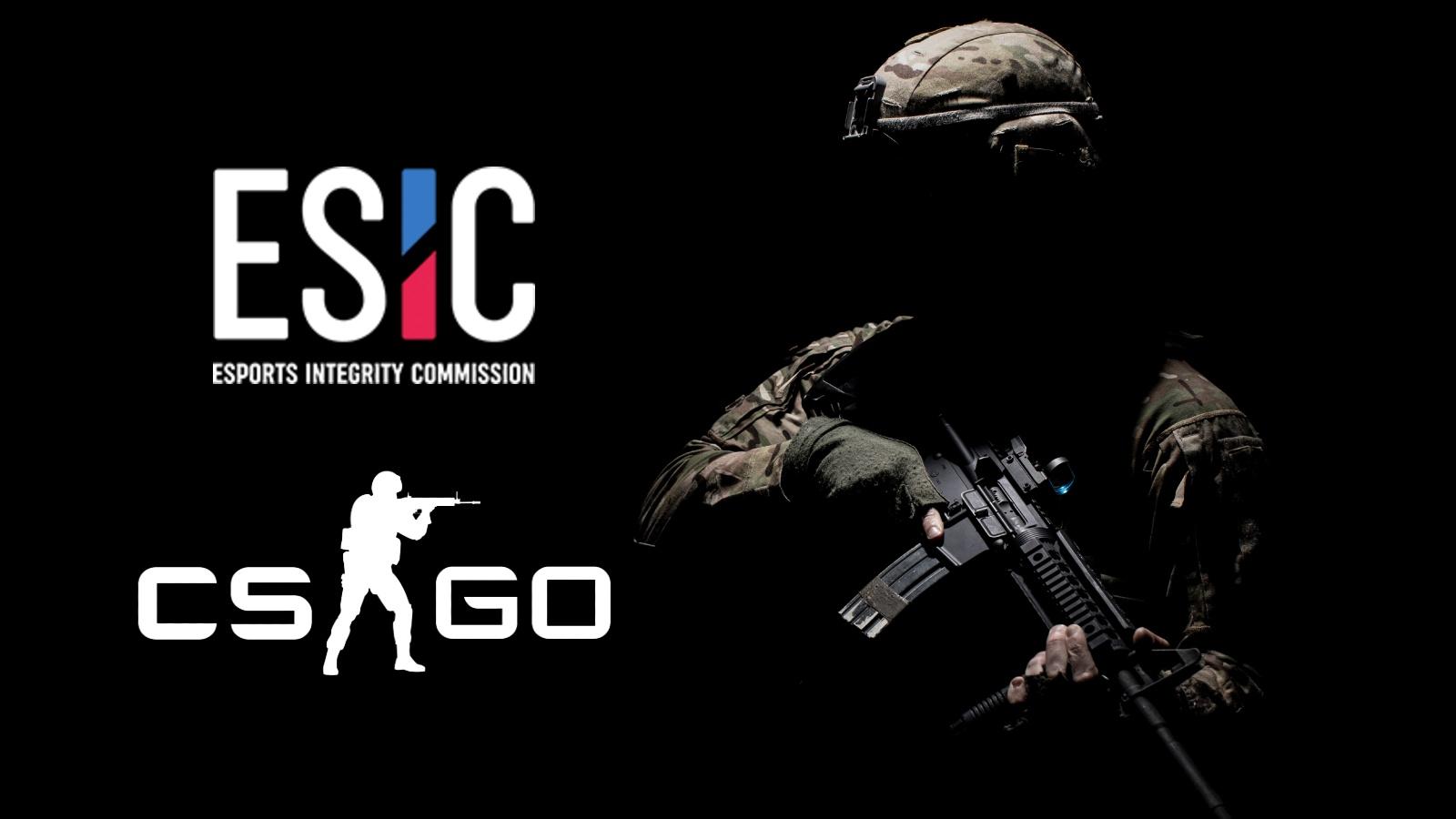 ESIC/Valve/Unsplash: Alexander Jawfox
ESIC/Valve/Unsplash: Alexander JawfoxAccording to ESIC, there are still almost a hundred coaches left to charge for the use of the spectator bug, including one who attended PGL Major Antwerp. This coach had the third-person view variant, which did not warrant an immediate suspension from ESIC member events. Due to its less serious nature, this variant will have its own penalty mechanism, with coaches facing 30-day bans per instance of bug use.
On May 5, ESIC also announced that the two other coaches who had encountered the free roam bug were being provisionally suspended from all member tournaments. However, Dexerto knows that this is yet to happen.
Contacted by Dexerto, four coaches who experienced the third-person variant of the bug all said that they are yet to hear from ESIC.
With appeals possible and a great number of cases still pending, it seems unlikely that ESIC will put an end to this protracted saga anytime soon. At the same time, the lack of coherence in the penalties handed down, the constant delays and the apparent procedural errors have undone a lot of the good will ESIC had built initially. And this is just one of the many investigations that ESIC has in its hands, some of which involve law enforcement, including the FBI.
“If you can’t do it properly, you shouldn’t be doing it at all,” Richard Lewis said. “When the North American match-fixing report eventually drops in 2026, no-one is going to care. They’re going to be like, ‘It’s ESIC, they’re incompetent.’”
The lack of progress in the investigation has only fuelled the esports community’s skepticism of ESIC’s ability to achieve what it set out to do. That sentiment has also grown among coaches, although most are hesitant to speak out.
ToH1o understands why coaches might feel that way: For eight months, while he waited for his hearing, he remained silent, despite the anger he had pent up inside of him. “It’s like you’re handcuffed in the worst jail in the world,” he says. “That’s how it feels. You’re not allowed to speak. I was scared. My girlfriend told me not to speak out or get angry on Twitter because they could use it against me and keep delaying the process.”
ToH1o is slowly starting to find his feet again. In April, he signed with Strife, a North American organization competing in ESL Challenger League. But when the qualifiers for the IEM Rio Major begin, he might not be on the server coaching the team, afraid that he might still be blacklisted by Valve.
Experience gained, few more days and we’re flying back home and start preparing for our ECL matches! 👊👊👊 pic.twitter.com/7jnMbnLxzm
— Anton Georgiev (@ToH1o) June 18, 2022
The sense of injustice still burns in him. He doesn’t forget how he blew through his savings just to survive after being left without work, how he was branded a cheater by the community, or how, during the darkest period of his life, he felt like crying every night when he sat on his couch, thinking about how his life had been upended by something he was not guilty of.
“My case is not closed,” he says. “I need a statement from ESIC and Valve regarding my case. How can I be happy if I’m still waiting? Are they not ashamed? Two years!”
ESIC was not available for comment in time for publication
